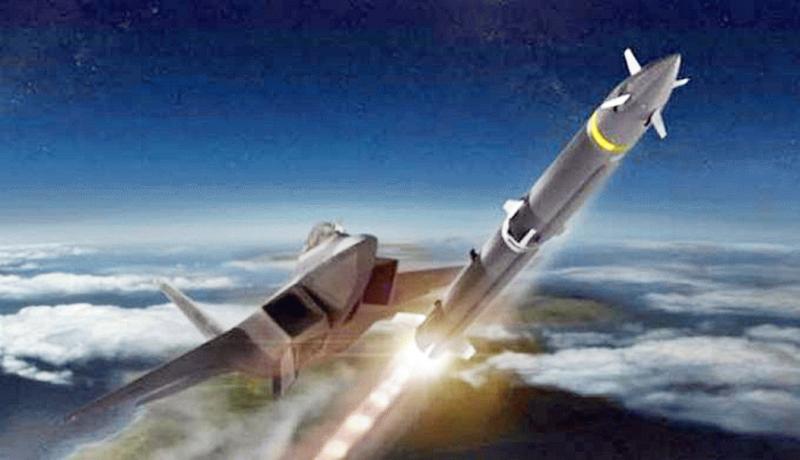Arthur J. Villasanta – Fourth Estate Contributor
Washington, DC, United States (4E) – The U.S. Air Force two years ago began secretly developing the Long-Range Engagement Weapon (LREW), its first new long-range air-to-air missile since the 1980s.
Leaks have blown the lid off the LREW that will replace the venerable AIM-120 Advanced Medium-Range Air-to-Air Missile (AMRAAM) beyond-visual-range air-to-air missile that arms all Air Force front line air superiority fighters and attack aircraft.
Sources said LREW will feature an advanced electronically scanned array (AESA) radar seeker in its nose to improve its detection ability and hit probability. LREW will also have a significantly longer range than AMRAAM.
The new missile will have a range much in excess of 200 km, which compares to the 180 km range of the latest version of the AMRAAM, the AIM-120D.
LREW will also be powered by a ramjet, which might allow it to reach hypersonic speeds in excess of Mach 5 (6,200 km/h). This missile, however, will have to be compact enough to fit into the internal weapons bays of the Lockheed Martin F-22 Raptor and F-35 Joint Strike Fighter.
A range beyond 200 km is a must since the Chinese are said to be developing a “Very Long Range Air-to-Air Missile” (VLRAAM) with a claimed range of 300 km.
VLRAAM is being developed to shoot down slow and unarmed U.S. aerial tankers and airborne early warning and control aircraft (AEW&C), and not faster stealth fighters such as the F-35 flown by the Navy and Marine Corps.
Chinese state-controlled media said VLRAAM is over six meters long compared to the 3.6 meter length for the AIM-120.
News stories and photos showed one of these VLRAAMs mounted beneath each wing of a Shenyang J-16 fourth generation, multirole fighter bomber during tests. Chinese sources said the missile is incompatible with China’s new stealth fighters, the Chengdu J-20 and the Shenyang J-31.
Powered by a rocket engine, VLRAAM has a claimed speed of Mach 6 (7,400 km/h). China said the advanced features of this big missile consist of AESA radar that locks onto a target; an infrared/electro-optical seeker and satellite navigation midcourse correction.
Article – All Rights Reserved.
Provided by FeedSyndicate





















